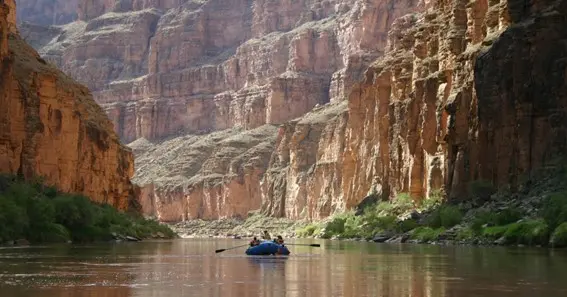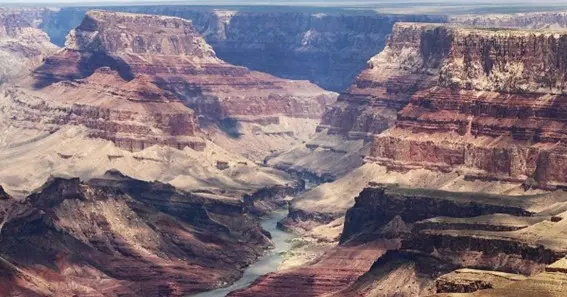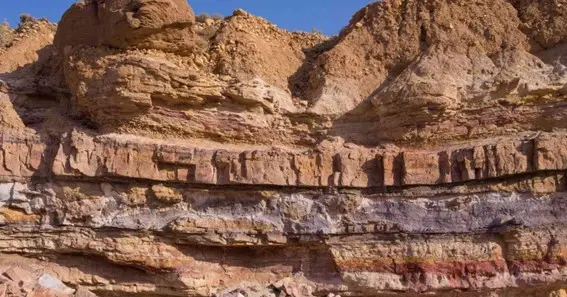What is the law of superposition? The law of Superposition is an important principle of geology, archaeology, and geological stratigraphy. In simple words, it means that older layers will stack at the bottom, and the younger layers will ascend above them as long as no disturbance or deformation occurs in the rocks. Scientists use this law to determine the relative age of rocks.
What Is The Law Of Superposition?
Friedrich von Schiller first observed and named the principle of superposition in 1785. The law of superposition, put simply, says that if there is any geological stratification, the oldest strata will be the first to form or deposit and that older strata will always be followed by younger strata that form as a result of progressively newer deposition throughout time.
Because younger rock layers are younger and hence more closely associated with the older layers in time, it states that rock layers are always in contact with younger rock layers (but not with older ones). In addition to helping geologists identify the age of geologic features like mountains and volcanoes that emerge in the middle of existing rock layers, the Law of Superposition allows geologists to calculate the relative ages of rock strata in order to reconstruct historical events. The Earth’s surface is one example of a vertical layer of rock where the Law of Superposition is evident.
Also Read N: What Does PWO Offer Meaning? Understanding PWO in Football
What Is The Law Of Superposition Sequence Direction?

The relationship is illustrated by contrasting stratigraphic columns from various regions of the globe on the surface of the Earth. When these strata are exposed to the surface of the Earth, they become directly visible. Even though there have been many variations in the circumstances over time, including erosion and deposition, the horizontal extent of the rock layers is generally quite consistent. Even when pebbles are not piled vertically, the Law of Superposition is still evident.
This comprises horizontally stacked rocks and layered sedimentary rocks, which are stratified rocks that are not arranged layer by layer. If two rocks are a component of the same rock body, they can also be observed in contact with one another vertically. Within a single rock mass, rocks with the same stratigraphic position or sequence in a vertical column might be found at different depths. The fact that every rock in a rock body was initially arranged layer by layer but later split apart in space and time as a result of changes to the rock’s chemical and physical composition during its evolution further supports this link. However, not every situation is covered by the Law of Superposition.
Also Read P: What Is Brass Composed Of? The Versatility And Historical Significance Of Brass
What is the law of superposition Application?

The law of superposition is a key idea in stratigraphy, the study of the layers of rock over time. It’s also used in sedimentary geology to explain various rock features. Often, the law of superposition is a crucial principle but not the only explanation. For instance, the shape of rivers can be understood by combining the law of superposition with the law of sedimentary basin development.
Not all geologic characteristics can be explained by superposition alone, despite the existence of the law of superposition. For instance, the law of folding is frequently used to explain how the strata in a mountain range fold. Similarly, there is a law of maximum age for the layers of oil shale, which can be explained by the fact that the oldest rock is the one that has been exposed most recently. But in general, rather than being best explained by the law of superposition alone, many geologic formations will be most naturally explained by a combination of the laws of superposition and sedimentary basin evolution.
Limitations Of The Law Of Superposition

The inability to apply the superposition geology theory exactly to some closely related subjects, including archaeology, is one of its limitations. The law of stratigraphy in geology is not the same as the stratigraphic superposition in archaeology. This is because the geological processes that result in the structural stacking needed to explain the rule of superposition are distinct from the mechanisms involved in the laying down of archaeological strata.
Furthermore, the primary and fundamental premise used to explain the law of superposition geology may not apply to artificial intrusions, which could not be in chronological order. Also, unlike the natural strata, the deformation brought on by human activity is not horizontal. It’s possible that some of the archaeological strata were created by older or preceding strata being undercut.
Conclusion
The law of superposition is a key principle in geology. It states that in undisturbed layers of sedimentary rocks, the oldest layers are at the bottom and the youngest at the top. This principle helps scientists determine the relative ages of rock formations. It was first described by Friedrich von Schiller in 1785. The law is essential for understanding geological history, though it is not the only factor considered in complex formations. Despite its limitations, the law of superposition remains a fundamental tool in stratigraphy and sedimentary geology.
FAQ
What Is The Law Of Superposition?
The law of superposition states that in undisturbed layers of rock, the oldest layer is at the bottom, and the youngest layer is at the top.
Where Is The Law Of Superposition Used?
It is primarily used in stratigraphy and sedimentary geology to determine the relative ages of rock layers.
Who Formulated The Law Of Superposition?
The law was first proposed by the Danish scientist Nicolas Steno in the 17th century.
What Are Some Limitations Of The Law Of Superposition?
The law may not apply if rock layers have been significantly disturbed by geological forces like folding or faulting.
Is The Law Of Superposition A Universal Principle?
It is a widely accepted principle in geology, though its application must consider geological events that may have altered the original rock layering.
Sources:
https://www.britannica.com/science/dating-geochronology/Principles-of-isotopic-dating
https://opengeology.org/textbook/glossary/principle-of-superposition/
https://www.geologyin.com/2023/02/the-principle-of-superposition.html










